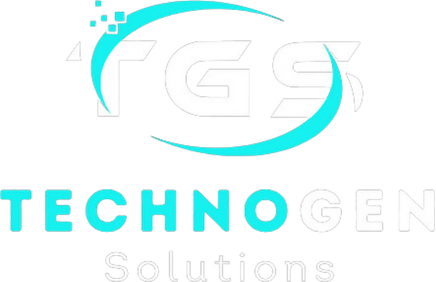In today’s competitive online environment, having a solid SEO strategy is crucial for driving traffic and increasing sales. By focusing on effective tactics and continuously optimizing your approach, you can ensure that your website not only ranks high in search engines but also converts visitors into customers. This guide will help you create a comprehensive SEO strategy that delivers results.
What is an SEO Strategy?
An SEO strategy is a blueprint that outlines how you plan to improve your website’s visibility in search engine results. A good strategy involves keyword research, content creation, technical optimization, and link building, all aimed at improving organic traffic. Ultimately, an effective SEO plan drives relevant traffic, enhances user experience, and increases conversions.
Why is SEO Important for Traffic and Sales?
SEO is important because it allows potential customers to find your business online. High-quality SEO not only brings visitors to your site but also ensures that those visitors are likely to take action—whether that’s making a purchase, signing up for a newsletter, or engaging with your content. When done correctly, SEO builds long-term visibility and credibility.
Step 1: Conduct Keyword Research
What is Keyword Research?
Keyword research is the process of identifying the terms and phrases that potential customers use when searching for products or services in your industry. These keywords form the foundation of your SEO strategy.
How to Do Effective Keyword Research
- Use Tools: Leverage tools like Google Keyword Planner, SEMrush, or Ahrefs to find relevant keywords.
- Focus on Long-Tail Keywords: Long-tail keywords are more specific and often have less competition. These terms typically result in higher conversion rates.
- Analyze Competitor Keywords: Look at what keywords your competitors are ranking for and consider targeting similar phrases.
Step 2: Optimize On-Page SEO
What is On-Page SEO?
On-page SEO refers to optimizing individual pages on your website to rank higher in search results. It includes content optimization, HTML code improvements, and improving the overall user experience.
Key On-Page SEO Elements
- Title Tags: The title tag should be concise, keyword-rich, and clearly describe the page content.
- Meta Descriptions: Write compelling meta descriptions to improve click-through rates.
- Headings: Use keyword-optimized headings (H1, H2, H3) to organize content and make it easy to read.
- Internal Links: Incorporate internal links to direct visitors to other relevant pages on your site.
- Mobile-Friendliness: Ensure your website is responsive and easy to navigate on mobile devices.
Step 3: Focus on Technical SEO
What is Technical SEO?
Technical SEO involves optimizing the backend of your website to make it easier for search engines to crawl and index your pages. This ensures that your site loads quickly, is mobile-friendly, and provides a seamless user experience.
Key Technical SEO Considerations
- Site Speed: A fast-loading site enhances user experience and reduces bounce rates. Use tools like Google PageSpeed Insights to identify areas for improvement.
- Sitemap: Submit an XML sitemap to search engines to help them understand the structure of your website.
- Robots.txt File: Ensure your robots.txt file is properly configured to allow search engines to crawl your important pages.
- SSL Certificate: Secure your site with HTTPS, as search engines prioritize secure websites.
Step 4: Create High-Quality Content
Why Content is King in SEO
Content is the backbone of any successful SEO strategy. High-quality, relevant content attracts visitors and encourages them to engage with your site. Content should be informative, engaging, and aligned with user intent.
How to Create SEO-Optimized Content
- Use Keywords Naturally: Avoid keyword stuffing. Instead, integrate your target keywords naturally into the content.
- Solve Problems: Create content that addresses the pain points of your target audience.
- Incorporate Visuals: Use images, infographics, and videos to enhance the user experience and keep visitors on your page longer.
- Content Length: Longer content (1,000+ words) generally ranks better in search engines. However, quality matters more than quantity.
Step 5: Build High-Quality Backlinks
What are Backlinks?
Backlinks are links from other websites that direct users to your site. They act as a vote of confidence in your content, helping to improve your site’s authority and rankings.
How to Earn Backlinks
- Guest Blogging: Write guest posts for reputable websites in your industry.
- Create Shareable Content: Infographics, guides, and listicles are more likely to be shared and linked to.
- Build Relationships: Connect with influencers and other bloggers in your niche to encourage backlink opportunities.
Step 6: Monitor Your SEO Performance
Why You Should Track SEO Metrics
SEO is an ongoing process that requires regular monitoring and adjustment. By tracking key metrics, you can see what’s working and what needs improvement.
Key SEO Metrics to Monitor
- Organic Traffic: Use Google Analytics to track your organic search traffic.
- Keyword Rankings: Monitor your keyword rankings over time to see how your site is performing.
- Bounce Rate: A high bounce rate could indicate that visitors aren’t finding what they’re looking for on your site.
- Conversions: Track conversions to see how well your SEO efforts are translating into sales or leads.
Step 7: Continuously Improve and Update Your SEO Strategy
SEO is not a set-it-and-forget-it strategy. The landscape of search engines and algorithms is constantly evolving, so staying updated with the latest trends and best practices is important.
How to Keep Your SEO Strategy Up to Date
- Regular Content Audits: Review your content regularly to ensure it’s current and relevant.
- Stay Updated on Algorithm Changes: Keep an eye on Google’s algorithm updates and adjust your strategy accordingly.
- Test and Experiment: Don’t be afraid to test new tactics to see what works best for your website.



Leave A Comment